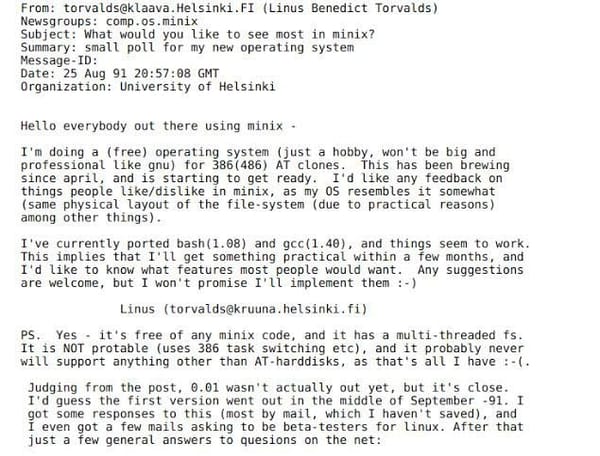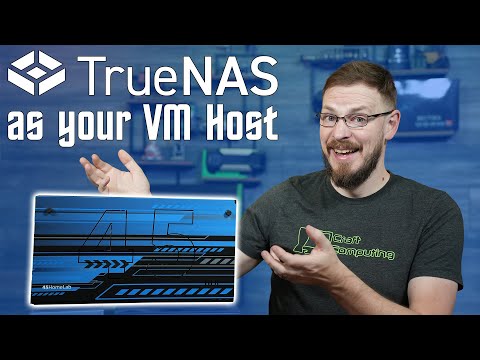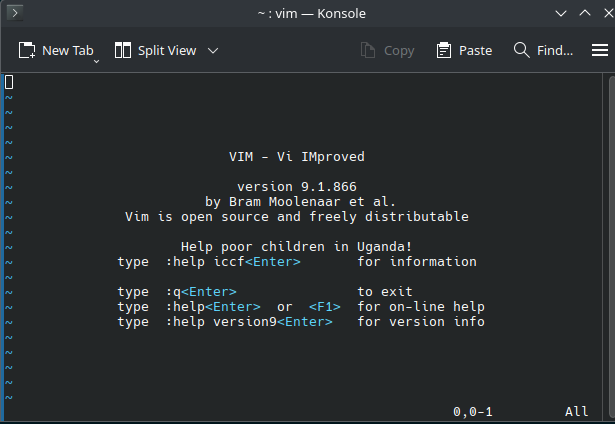Ghost doesn’t have a native commenting system but integrates well with third-party solutions such as Disqus, Cove, or membership discussions. You can migrate your existing WordPress comments to one of these platforms, though the process may require additional steps.
Table of Contents
- 1 Option 1: Ghost Pro (The Easy Way)
- 2 Option 2: Manual Migration (The DIY Approach)
- 3 Troubleshooting Tips
- 4 After Action Report: Post-Migration Considerations
- 5 Frequently Asked Questions: WordPress to Ghost Migration
- 5.1 Will I lose my SEO rankings when moving to Ghost?
- 5.2 What happens to the functionality of my WordPress plugins after migrating to Ghost?
- 5.3 Can I keep my WordPress theme design in Ghost?
- 5.4 Will my WordPress media library transfer completely to Ghost?
- 5.5 Can I keep my WordPress users and their roles in Ghost?
- 5.6 Will my scheduled posts work in Ghost after migration?
- 5.7 Will my WordPress forms still work in Ghost?
- 5.8 Can I test the migration before going live?
- 5.9 What happens to my WordPress categories?
- 5.10 Will my internal links break after migrating to Ghost?
- 5.11 Can I move my WordPress e-commerce store to Ghost?
- 5.12 Do WordPress shortcodes work in Ghost?
- 5.13 Can I migrate my WordPress subscription/membership system to Ghost?
Option 1: Ghost Pro (The Easy Way)
Categories from WordPress are converted to tags in Ghost since Ghost uses a simpler taxonomy system. Ghost will preserve the hierarchical organization by displaying former categories before regular tags.
- Have a complex WordPress setup
- Want to ensure nothing gets lost in translation
- Prefer a hands-off approach
- Need professional support throughout the process
Option 2: Manual Migration (The DIY Approach)
Most essential features provided by WordPress plugins are available as native features in Ghost, eliminating the need for plugins. However, if you rely on very specific plugin functionality, you’ll need to check if Ghost provides an alternative solution or if you can achieve the same result through Ghost’s integrations.
Step 1: Prepare Your WordPress Site
- Log in to your WordPress dashboard
- Navigate to Plugins → Add New
- Search for “Ghost” (ensure it’s by Ghost Foundation)
- Click “Install Now” followed by “Activate“
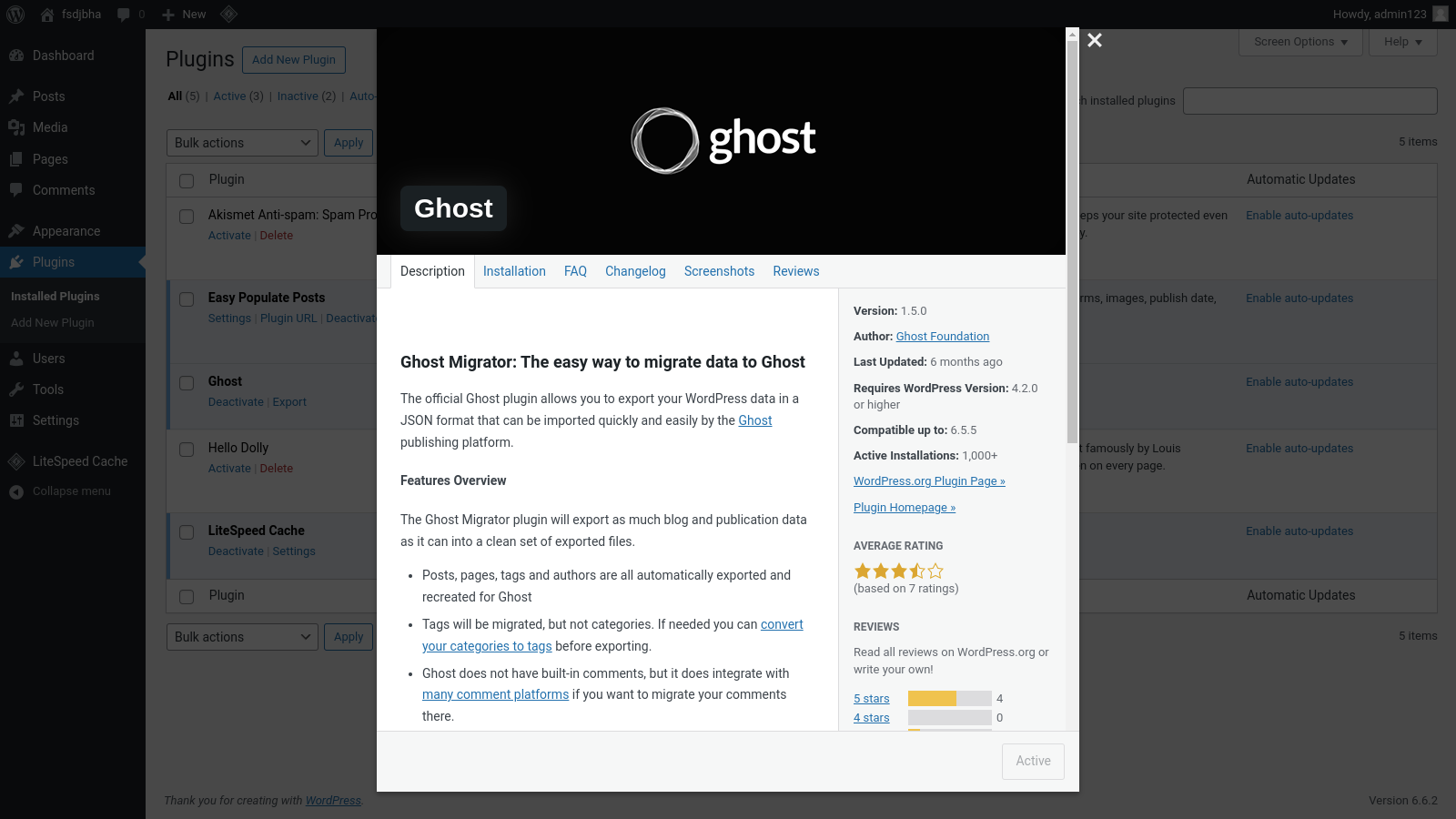
Step 2: Export Your Content
- After installing the plugin, go to “Tools” → “Export to Ghost” in your WordPress dashboard
- Review the preparation guide to understand what will be exported
- Click “Download Ghost File” to get a ZIP file containing your content
- Store this file safely, as it contains all of your posts, pages, tags, and images
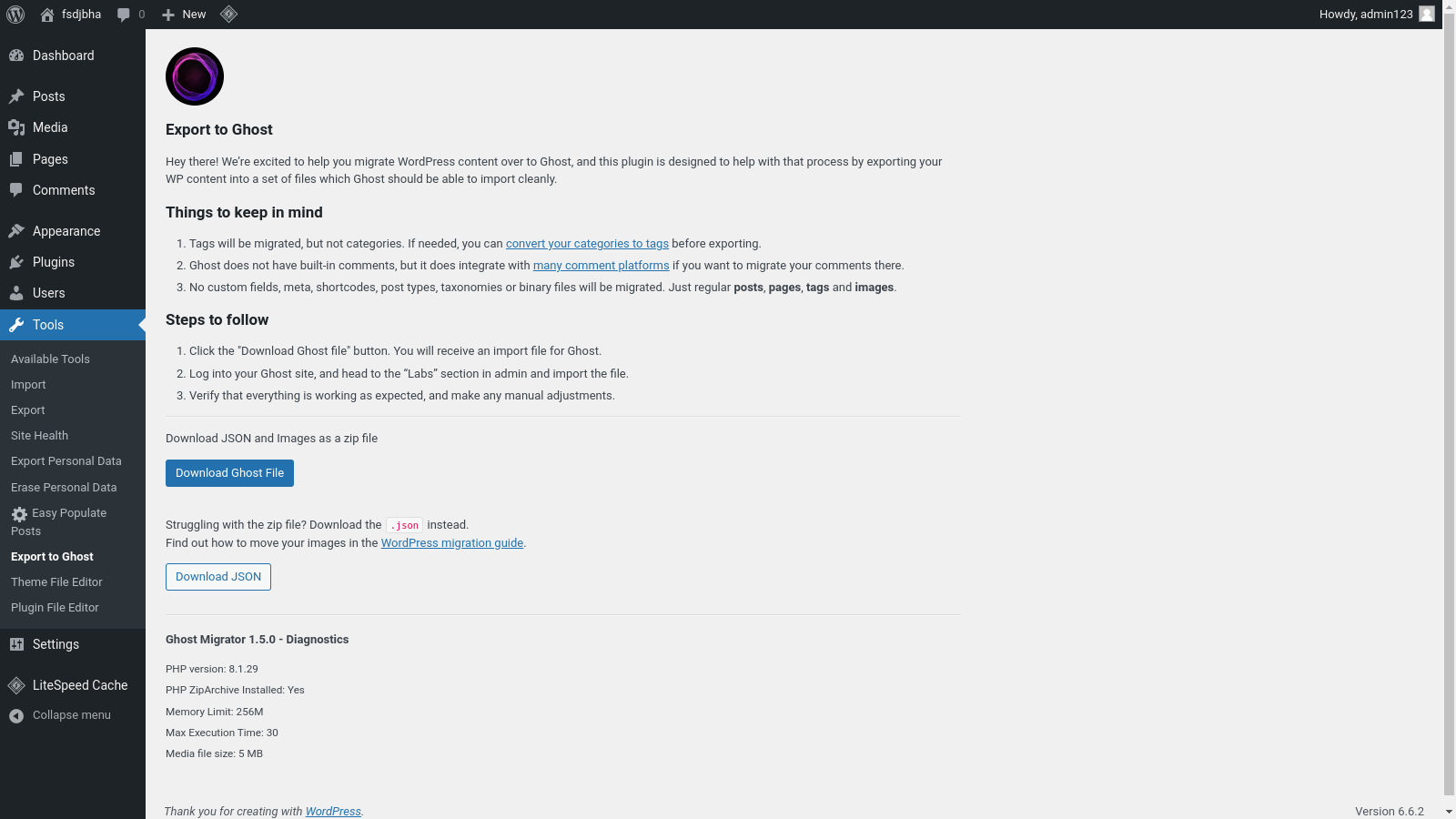
Step 3: Prepare Your Ghost Installation
- After downloading your content, you can upload it to your Ghost website. This tutorial assumes that your Ghost site is properly set up and running. If this is not the case, you can refer to our guide on installing Ghost CMS to view the step-by-step instructions.
- Open your Ghost website and navigate to your Ghost Admin panel
- Navigate to “Settings” → “Advanced” and scroll down till you see the “Migration Tools” section.
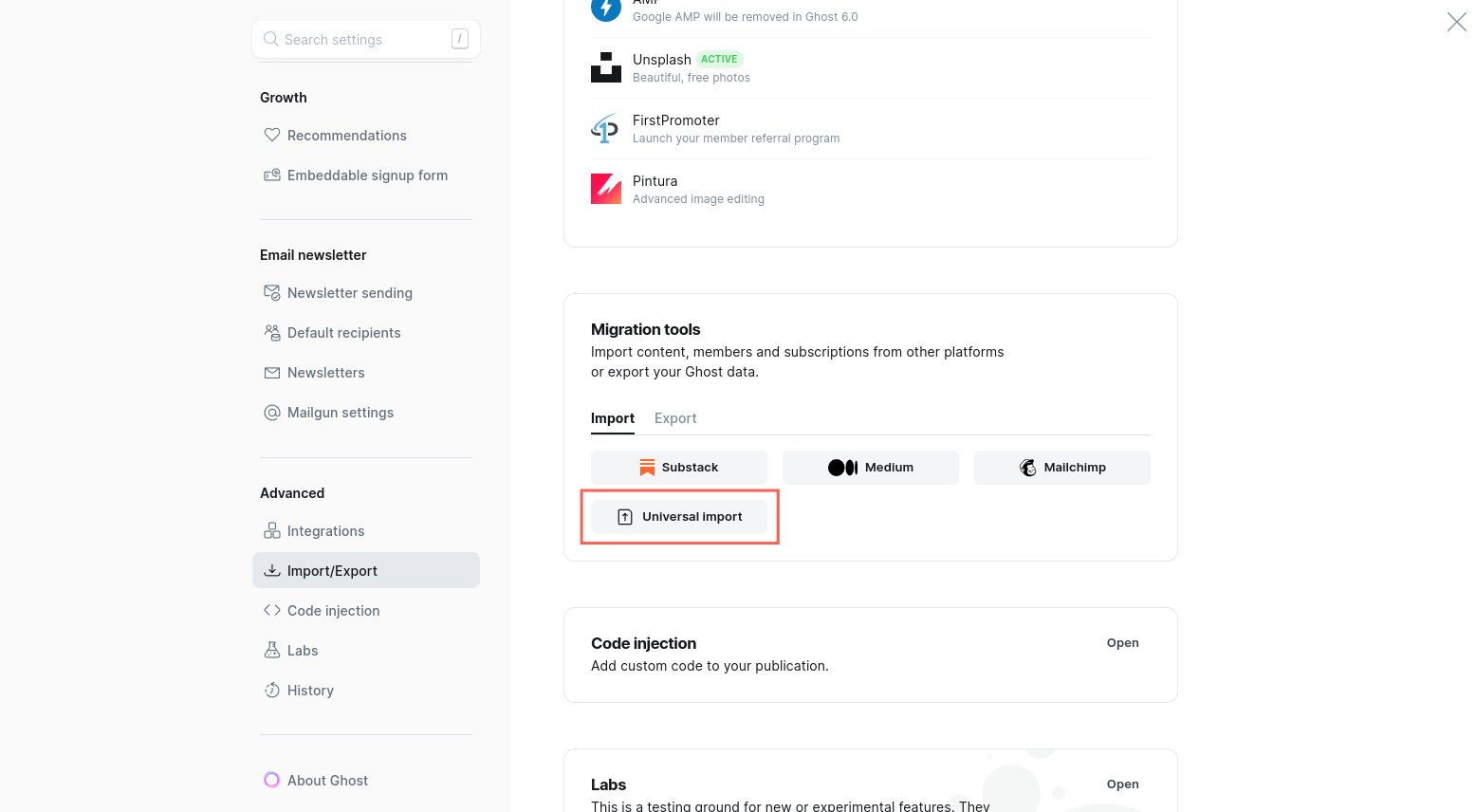
Step 4: Import Your Content
- On the import page, click “Universal Import“
- Drag and drop your exported ZIP file or click to select it via File Explorer.
- Wait for the import process to complete (this may take several minutes, depending on your content volume)
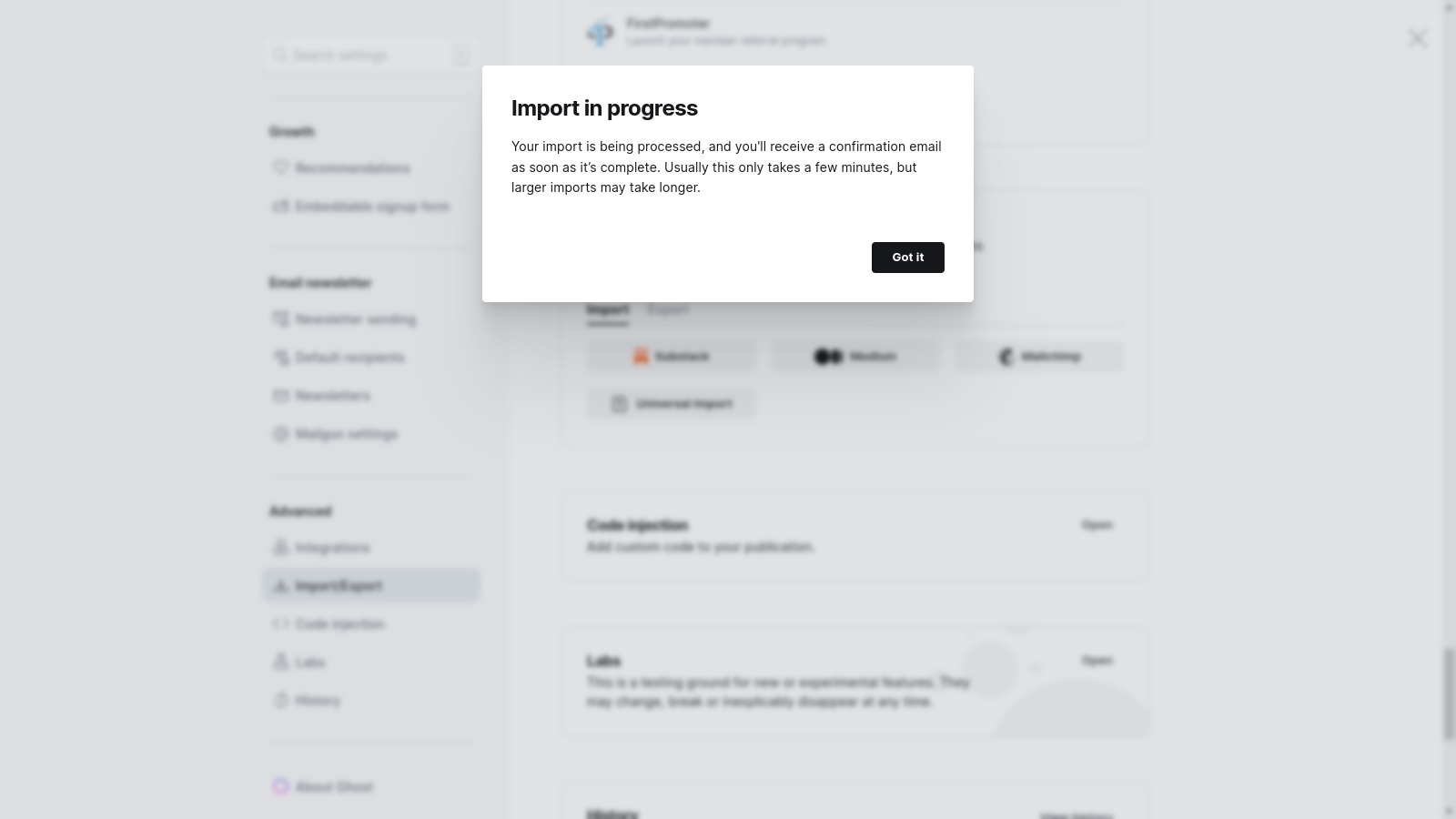
Step 5: Post-Migration Tasks
- Verify all content has been imported correctly
- Check that images are displaying properly
- Update any internal links to match your new Ghost URL structure
- All the scheduled posts from WordPress will be marked as drafts in Ghost. If you have any scheduled posts, you must manually review and schedule them in Ghost.
Troubleshooting Tips
While you can’t directly port your WordPress theme to Ghost, you can create or purchase a similar theme that matches your current design. Ghost uses a modern theming system based on Handlebars, and many professional themes can be customized to match your WordPress site’s look.
Large Image Sets
WordPress forms won’t transfer directly to Ghost, but Ghost integrates with popular form services such as TypeForm or Google Forms. You’ll need to recreate your forms using one of these third-party services and embed them in your Ghost content.If you are unsure how to do this, refer to our post, which explains how to copy files via the command line in Linux.Sometimes, the WordPress export can create problematic ZIP files that Ghost won’t accept. Some people on the community forums have reported issues with the WordPress-generated ZIP file structure:Are you feeling constrained by WordPress or simply looking for a fresh start? Ghost offers a compelling alternative for content creators, whether you’re seeking better performance, a cleaner writing experience, or a modern publishing platform.
Export Failures
Basic user information and author attributions will transfer, but all users must set up new passwords in Ghost. Ghost has a simpler role system than WordPress (Admin, Editor, Author, and Contributor), so some custom WordPress roles may need to be reorganized.
- Try the JSON export option instead (excludes images)
- Download images separately from your server
- Manually organize images in the correct directory structure
- Create a new ZIP with both the JSON and organized images
Error During Ghost Zip Import
Ghost automatically generates RSS feeds with a slightly different URL structure from WordPress. You must update any services using your RSS feed to point to your new Ghost RSS feed URL.
- If you find plain text error messages at the beginning of your ZIP file, this can make the archive unreadable
- The solution is simple:
- Extract all contents from the original WordPress export
- Create a fresh ZIP file on your local machine
- Include only the essential JSON and image files
- Use this newly created ZIP for the Ghost import
After Action Report: Post-Migration Considerations
Ghost isn’t designed for e-commerce like WordPress with WooCommerce but integrates well with external e-commerce platforms. You’ll need to set up your store on a platform such as Shopify or Gumroad and integrate it with your Ghost site.
- Set up redirects from your old WordPress URLs to your new Ghost URLs
- Update any external services pointing to your old WordPress site
- Test all forms and interactive elements on your new Ghost site
- Review your SEO settings and metadata
- Update your DNS settings if changing domains
Alternatively, if both your WordPress site and Ghost site are on the same server, you can simply copy and paste the images from one folder to another via SSH. To do this, you must copy all the content in the /wp-content/uploads/ folder in your WordPress installation and paste it into your Ghost installation’s/content/images/wordpress/ folder.But before we get started, there is one thing that you should know about!If you have hundreds of images on your WordPress site, downloading and uploading them can take quite a long time. If this is the case, you can download just the JSON file in step 2 and migrate your images manually.

